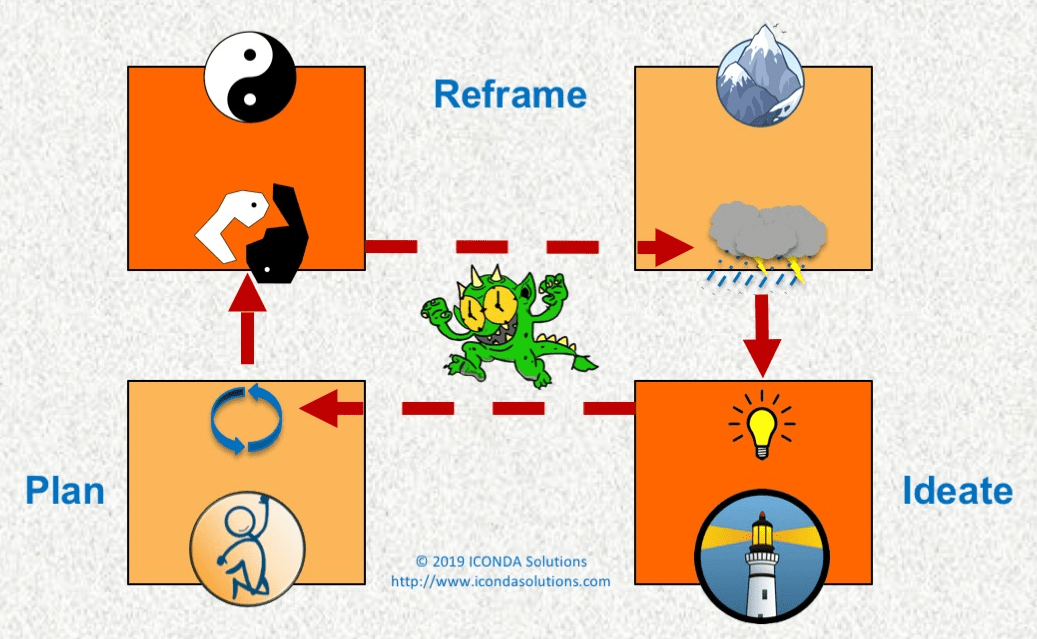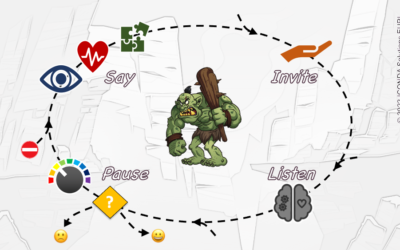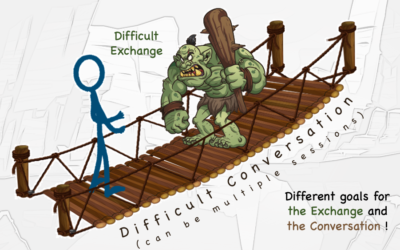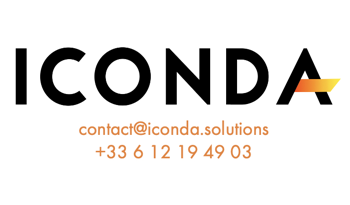Apparently, I suffer from an affliction which most people manage to avoid. A weird mixture of intellectual laziness and hyperactivity, it once led me to attempt the reduction of German grammar to a handful of equations. Preferably to one equation. Einstein had managed it for physics, I reasoned … 😉
Self-deprecation notwithstanding, I’m still trying to simplify the world into something that I can understand/remember, and the above diagram is one result.
I call the inner loop a Short-Circuit – it’s shown with dotted arrows and a “Hurry Monster“. It summarises the way we react to a bad situation by looking at superficial problems then coming up with simple ideas and corresponding (probably unoriginal) actions: our customer complains that our website is broken and so we take an afternoon to get it working for them; after the fact, we realise that the problem was caused by their use of an obsolete browser and, even worse, that they were merely looking for information that we could have given them in a few seconds; if we’d only asked what they were trying to do before diving into fixing the reported problem …
Another example: a nation has economic problems (broken yin-yang); the population is encouraged to blame a certain minority or institution (the cloud); let’s get rid of them (the lightbulb); various disastrous actions then ensue. And when the original problems don’t go away, the short-circuit repeats and intensifies.
The point is, whether you are a doctor or a salesperson responding to a request, an engineering team trying to resolve a complex problem or a UN mediator attempting to avoid a war, it is crucial to avoid this Short Circuit.
Doing so requires a more effortful approach, starting with a fresh look at what we are aiming to achieve and the challenges we face: it requires a Reframe. This gives us a new frame of reference in which to Ideate – i.e. think of possible new approaches and select the most promising ones. In the Plan step we then work out how use these new ideas to get to the desired situation (in this scheme, planning includes prototyping, if appropriate). These three R-I-P steps are at the heart of several leading problem-solving and innovation methodologies, including Creative Problem Solving and Design Thinking.
Coming back to Einstein: “We cannot solve our problems with the same thinking we used when we created them”. We must take a step back, away from the Short Circuit and onto the more difficult outer path.
In fact, as well as illustrating the Short Circuit and the RIP flow, the diagram supports a wide range of discussions about communication and collaboration: learning discovery, guiding discovery, confrontation and systemic methods, for example. And it uses symbols as far as possible in order to minimise terminology distractions.
The yin-yang symbol represents a desired (harmonious) situation and, below it, the broken yin-yang is an unsatisfactory one. Related issues are symbolised with clouds while bigger challenges, to be expressed positively, are shown as mountain peaks. Needs implied by the issues are shown as an idea lightbulb and major insights as a lighthouse. Finally, obvious action points are represented by circular arrows and an energising action plan takes the form of a happy stickman.
I’ve found most behavioral models and communication/collaboration methodologies to be consistent with this diagram and it really helps, in trainings and workshops, to have such a pictorial overview. There’s no space here to write more about these models and methodologies – let’s just say that they help keep us on the Reframe, Ideate, Plan (R-I-P) path, allowing the Hurry Monster to Rest In Peace.






